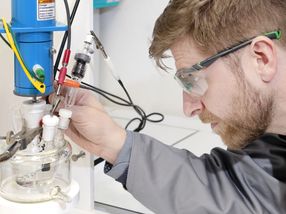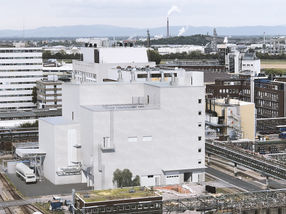Agilent Technologies announces routine, sensitive method for determining nitrofuran metabolites in food animal products
Agilent Technologies Inc.today announced development of a routine, highly sensitive liquid chromatography-electrospray ionization-mass spectrometry (LC-ESI-MS) method to simultaneously determine four nitrofuran metabolites in food animal tissue. For chicken tissue analysis, the limit of detection for each metabolite ranged from 0.02 to 0.06 ng/mL.
Food safety officials can use this technique to accurately screen imported foods for the presence of nitrofurans, which pose a risk to public health because of their known carcinogenicity. For food product exporters, this method provides a routine and reliable means of ensuring that their exports meet inspection requirements prior to shipment, reducing the potential loss from rejected shipments.
The nitrofuran antibacterial drugs (furazolidone, furaltadone, nitrofurazone and nitrofurantoin) are widely used as feed additives to prevent bacterial enteritis in cattle, fish, swine and poultry, yet the presence of nitrofuran residues in edible tissue is a major human health concern. The use of nitrofurans in food animal production was banned in the European Union in 1995 and in the United States in 2002.
In addition to the public health implications, the presence of nitrofuran residues in food can have significant economic consequences for worldwide food product importers and exporters. In early 2002, the EU tightened its inspection policy for food imports after nitrofuran residues were found in shrimp, fish and poultry imports. The inspections not only reduced the volume of those imports entering the EU, but also lowered the confidence of consumers in the safety of imported food.
The analysis of nitrofurans is complicated by their rapid metabolism, as the drugs have in vivo half-lives of less than a few hours. Detecting the parent drug in animal tissue, therefore, is not practical. However, tissue-bound metabolites of these antibacterial drugs are detectable for several weeks. It is possible to release these metabolites under moderately acidic conditions and derivatize them for analysis using LC and ultraviolet detection, using MS for confirmation.
Agilent chemists applied this method to the analysis of nitrofurans in chicken muscle and liver tissues. They performed the analysis using an Agilent 1100 Series LC/MSD system with electrospray ionization. Sample cleanup and analyte enrichment were performed using liquid-liquid extraction with ethyl acetate, followed by solvent wash, acid extraction by homogenization, and derivatization using 2-nitrobenzaldehyde. Each metabolite produced a simple mass spectrum containing a strong signal corresponding to [M+H]+. The analysis provided excellent linearity with correlation coefficients greater than 0.999 for all metabolites and very low limits of detection, from 0.02 to 0.06 ng/mL.
Further information is available by requesting Agilent application note "Determination of the Metabolites of Nitrofuran Antibacterial Drugs in Chicken Tissue by Liquid Chromatograph-Electrospray Ionization-Mass Spectrometry (LC-ESI-MS)," Agilent publication number 5988-8903EN.
Most read news
Topics
Organizations
Other news from the department science

Get the chemical industry in your inbox
From now on, don't miss a thing: Our newsletter for the chemical industry, analytics, lab technology and process engineering brings you up to date every Tuesday and Thursday. The latest industry news, product highlights and innovations - compact and easy to understand in your inbox. Researched by us so you don't have to.
Most read news
More news from our other portals
See the theme worlds for related content
Topic World Chromatography
Chromatography enables us to separate, identify and thus understand complex substances. Whether in the food industry, pharmaceutical research or environmental analysis - chromatography opens up a treasure trove of information about the composition and quality of our samples. Discover the fascinating world of chromatography!

Topic World Chromatography
Chromatography enables us to separate, identify and thus understand complex substances. Whether in the food industry, pharmaceutical research or environmental analysis - chromatography opens up a treasure trove of information about the composition and quality of our samples. Discover the fascinating world of chromatography!
Topic World Mass Spectrometry
Mass spectrometry enables us to detect and identify molecules and reveal their structure. Whether in chemistry, biochemistry or forensics - mass spectrometry opens up unexpected insights into the composition of our world. Immerse yourself in the fascinating world of mass spectrometry!

Topic World Mass Spectrometry
Mass spectrometry enables us to detect and identify molecules and reveal their structure. Whether in chemistry, biochemistry or forensics - mass spectrometry opens up unexpected insights into the composition of our world. Immerse yourself in the fascinating world of mass spectrometry!



























































